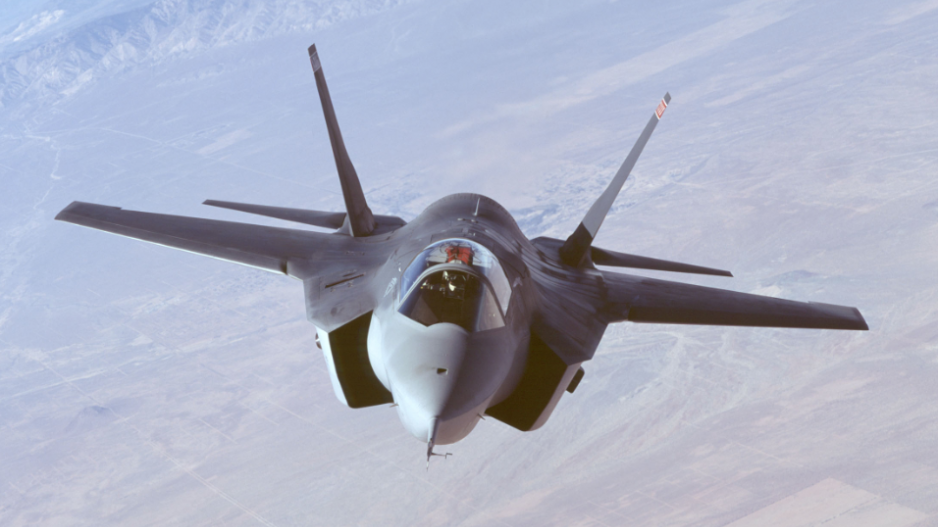The world’s most advanced stealth fighter jet – the one the federal government doesn’t want to buy – touches down today in Abbotsford, where it will be on display Friday through Sunday at the annual Abbotsford Air Show.
The F-35, which has already generated hundreds of millions of dollars in contracts for B.C. aerospace companies, promises to be one of the highlights of this year’s air show.
British Columbians will get a chance to see first-hand and up-close the fighter jet that the Liberal government doesn’t want to buy, as well as the one that it does want to buy – the F/A-18 Super Hornet, which will also be at this year’s air show.
But don’t expect to see an aerial dogfight. The Boeing (NYSE:BA) F/A-18 Super Hornet will actually by flying at this year’s air show, but the Lockheed Martin Corp. (NYSE:LMT) F-35 will not be performing. It will be a static display only.
When Lockheed Martin first began designing and building its new fifth generation stealth fighter, Canada was among a dozen countries to join a consortium called the Joint Strike Fighter (JSF) that agreed to put in orders. Canada ordered 65 F-35s to replace its aging fleet of CF-18 fighter jets.
As a result of joining the JSF, Canadian aerospace companies – including several in B.C. – have won roughly US$825 million in contracts.
Delta headquartered Avcorp Industries Inc. (TSX:AVP) won a $500 million contract to build the wing assemblies for the C Variant of the F-35, which is designed for aircraft carriers. Asco Aerospace Canada Ltd., also based in Delta, won $40 million worth of contracts to build titanium and aluminum bulkheads for the F-35.
While those existing contracts will be honoured, the aerospace industry in Canada expects it will lose out on billions worth of future contracts, since the federal government announced it will not buy the F-35.
That decision is based at least in part on an Auditor General’s report that concluded the procurement would cost $25 billion – not $9 billion, as the previous Conservative government said it would cost – since the original estimate did not include the ongoing maintenance costs.
Originally, the F-35’s price tag was about $100 million per plane, compared with about $57 million for the older F/A-18 Super Hornet.
Now that the plane is actually in production, the F-35’s costs have come down to around $85 million per plane, according to Scott McCrady, CJIG’s director for the JSF,
The Liberal government said it would not consider the F-35 when it initiated a new evaluation process and recently Prime Minister Justin Trudeau said the jet “far from working.”
Just last week, Lockheed Martin announced the F-35 is not only working, but combat ready.
A recent evaluation by the Danish Ministry of Defence might give the Canadian government reason to reconsider its antipathy towards the F-35. The Danish military compared three fighter jets – the F-35, Super Hornet and the Eurofighter.
The F-35 came out on top in all four evaluation criteria, including costs. The F-35 will last longer, the study concluded. It is designed to fly for 8,000 hours, compared to 6,000 hours for both the Super Hornet and Eurofighter.
So the overall lifetime costs of the F-35 are lower than the other two older jets. It also beat the other two jets on military aspects like survivability – i.e. it’s ability not to be shot down.
“Basically what the Danes came up with is that the F-35 is cheaper than the F-18,” McCrady said.
General admission tickets for adults are $30 for a day pass or $50 for a weekend pass. For information visit the Abbotsford Air Show website.




